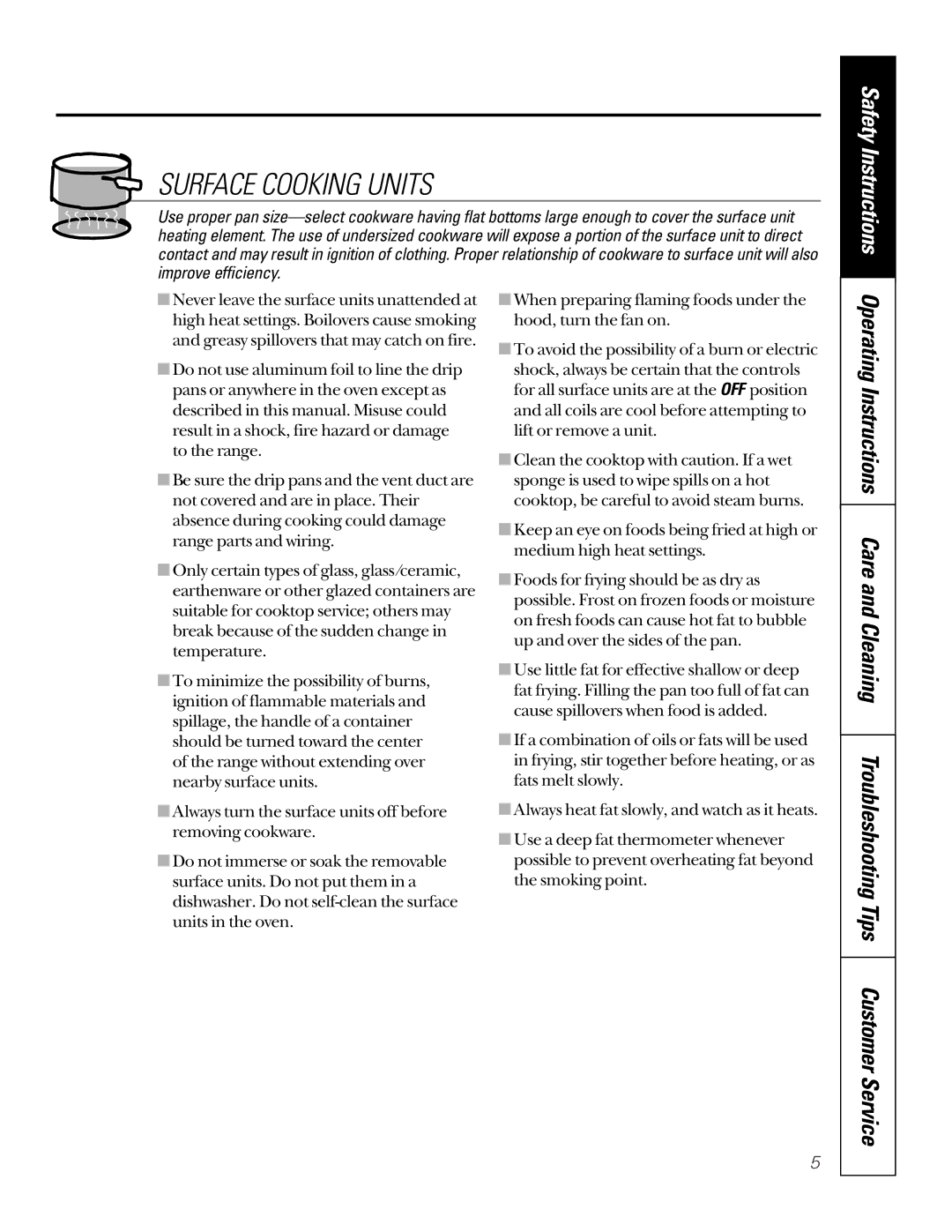
SURFACE COOKING UNITS
Use proper pan
Safety Instructions
■Never leave the surface units unattended at high heat settings. Boilovers cause smoking and greasy spillovers that may catch on fire.
■Do not use aluminum foil to line the drip pans or anywhere in the oven except as described in this manual. Misuse could result in a shock, fire hazard or damage to the range.
■Be sure the drip pans and the vent duct are not covered and are in place. Their absence during cooking could damage range parts and wiring.
■Only certain types of glass, glass ⁄ceramic, earthenware or other glazed containers are suitable for cooktop service; others may break because of the sudden change in temperature.
■To minimize the possibility of burns, ignition of flammable materials and spillage, the handle of a container should be turned toward the center of the range without extending over nearby surface units.
■Always turn the surface units off before removing cookware.
■Do not immerse or soak the removable surface units. Do not put them in a dishwasher. Do not
■When preparing flaming foods under the hood, turn the fan on.
■To avoid the possibility of a burn or electric shock, always be certain that the controls for all surface units are at the OFF position and all coils are cool before attempting to lift or remove a unit.
■Clean the cooktop with caution. If a wet sponge is used to wipe spills on a hot cooktop, be careful to avoid steam burns.
■Keep an eye on foods being fried at high or medium high heat settings.
■Foods for frying should be as dry as possible. Frost on frozen foods or moisture on fresh foods can cause hot fat to bubble up and over the sides of the pan.
■Use little fat for effective shallow or deep fat frying. Filling the pan too full of fat can cause spillovers when food is added.
■If a combination of oils or fats will be used in frying, stir together before heating, or as fats melt slowly.
■Always heat fat slowly, and watch as it heats.
■Use a deep fat thermometer whenever possible to prevent overheating fat beyond the smoking point.
Operating Instructions Care and Cleaning Troubleshooting Tips Customer Service
5
